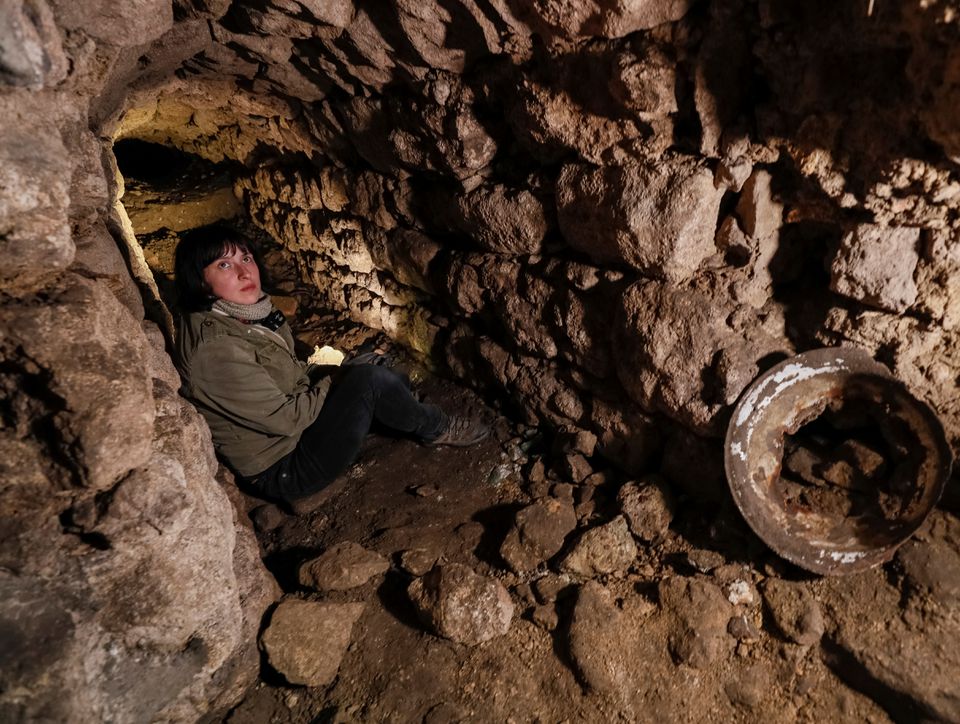Hiding spots used by Jews during Nazi Holocaust discovered in sewers of Ukrainian city
A 7m-long tunnel helped Jews escape from ghetto barrack to sewers of Lviv

Your support helps us to tell the story
From reproductive rights to climate change to Big Tech, The Independent is on the ground when the story is developing. Whether it's investigating the financials of Elon Musk's pro-Trump PAC or producing our latest documentary, 'The A Word', which shines a light on the American women fighting for reproductive rights, we know how important it is to parse out the facts from the messaging.
At such a critical moment in US history, we need reporters on the ground. Your donation allows us to keep sending journalists to speak to both sides of the story.
The Independent is trusted by Americans across the entire political spectrum. And unlike many other quality news outlets, we choose not to lock Americans out of our reporting and analysis with paywalls. We believe quality journalism should be available to everyone, paid for by those who can afford it.
Your support makes all the difference.Local historians and diggers in Ukraine have uncovered hiding spots in underground sewers in the city of Lviv which were reportedly used by Jews escaping Nazi forces during World War II.
The first documented mention of these hiding spots were made in a book by father-daughter duo Ignacy and Krystyna Chiger, who fled a Jewish ghetto from Nazi clutches in 1940s. This mention led local historian Hanna Tychka to kickstart the search for this tunnel that helped some Jews survive the Holocaust.
The Chiger family was among the few that escaped mass killings by digging a tunnel into the city’s sewage system and living there in 1943-44. More than 100,000 people, close to one-thirds of the city’s population at that time, were killed by Nazis in one of the biggest human tragedies recorded during the Holocaust, according to official estimates.
Local diggers and Ms Tychka found the exact area recently, with the help of the Chigers’ book. In their desperate bid, the family dismantled a 90cm thick concrete sewer wall and dug a seven-metre-long tunnel, which led them from the ghetto barrack to the underground pipes of the sewer.
“They had to work quietly so that Nazis would not find out that digging activity was happening in the barrack basement,” Ms Tychka told Reuters. “The Jews used a hammer wrapped in a duster.”
Out of a total 21 people who fled to the underground sewers, only 10 survived. Among them was Halina Wind Preston, a woman then in her 20s. Her son David Lee Preston confirmed that the conditions in the black tunnel were not conducive for extended human survival.
Amid the looming threat of being caught by the Nazis, several in the group could not stand the conditions for long and left.
The group were forced to suffocate a baby born to a woman in the group as they were afraid that his crying would give away their location to Nazi troops, Mr Preston said. The woman’s husband was swept away when he was out to secure drinking water for his family.
Ms Tychka and her team discovered items such as corroded plates and traces of carbide used for lanterns in the tunnel system, which they believe were used by the fleeing families. They also found a pipe that they think the families used for drinking water.
On Wednesday, Ukraine marked the 80th anniversary of the mass shooting of civilians at Babyn Yar in Kyiv, which claimed nearly 34,000 lives in a two-day period, in one of the single largest massacres of Jews during the Holocaust. More mass shootings took place at the site throughout the Second World War.
Organisers have used modern techniques such as advertising on Ukraine’s Tinder, modern-art installations and online gaming to draw visitors to the memorial site. “Touch the tragedy of Babyn Yar,” the ad said, inviting users to visit the site, according to The New York Times.
Ukraine’s president Volodymyr Zelenskyy is expected to unveil a modern art installation at the site on Wednesday.
Join our commenting forum
Join thought-provoking conversations, follow other Independent readers and see their replies
Comments